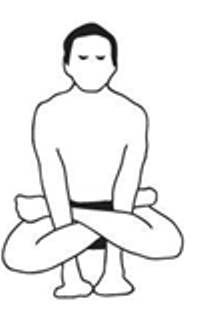Yoga Anatomy Physiology and Bio-mechanics question answer

1. Why yoga student should know about “anatomy” Understanding yoga anatomy is crucial for all yoga students because it will increase the effectiveness of the asanas and knowledge to protect from creating injuries and also be better prepared to deal with any existing injuries safely and effectively. 2. Why yoga student should know about “Physiology” Through […]
Anatomical directional terminology

Anatomical directional terminology Define the directional term “superior” Towards the head or top, eg. Head Define the directional term “cranial” Cranial refers to the skull Define the directional term “posterior or dorsal” Refers to behind or back of the body eg. Shoulder blades Lateral Refers to away from the midline of the body or towards […]
hamstring muscles.

Hamstring muscles are in the back of the thigh, starting at the hip and inserting to the knee. The three hamstring muscles are: Biceps femoris, closest to the outside of your body. The function of this hamstring is to flex your knee, extend the thigh at your hip and rotate your lower leg from side-to-side when your […]
vital capacity

Vital capacity (VC) is the maximum amount of air a person can inhale after a maximum exhalation. It is equal to the sum of inspiratory reserve volume, tidal volume, and expiratory reserve volume.
Importance of pleura during respiration

The pleura fluid itself has a slightly adhesive quality that helps draw the lungs outward during inhalation rather than slipping round in the chest cavity. In addition, pleural fluid creates surface tension that helps maintain the position of the lungs against the chest wall.
Gaseous Exchange

The transfer of gases between an organism and the external environment in either direction. It occurs by diffusion across a concentration gradient and includes the exchange of oxygen and carbon dioxide in respiration and photosynthesis. Successful gaseous exchange requires a large surface area, as is provided by the alveoli of the lungs and the leaves […]
major skeletal muscles.

major skeletal muscles. Coracobrachialis Biceps brachii Quadriceps femoris Triceps brachii Anconeus Pronator teres Flexor carpi radialis Palmaris longus Thyroarytenoid Rotatores
How many lobes are their in right lungs?

The right lung consists of three lobes: the right upper lobe (RUL), the right middle lobe (RML), and the right lower lobe (RLL)
How many ‘planes’ are their in human body

There are the 3 planes of motion/movement in the body. The three planes in the human body are the sagittal, coronal (or frontal), and transverse planes.
Why yoga student should know about “ human Physiology”

Through the study of anatomy in yoga teacher training, you will acquire a deep understanding of the execution and alignment of asanas. An awareness in yoga anatomy and physiology will add credibility to your teaching and will be very helpful to your prospective yoga students.
